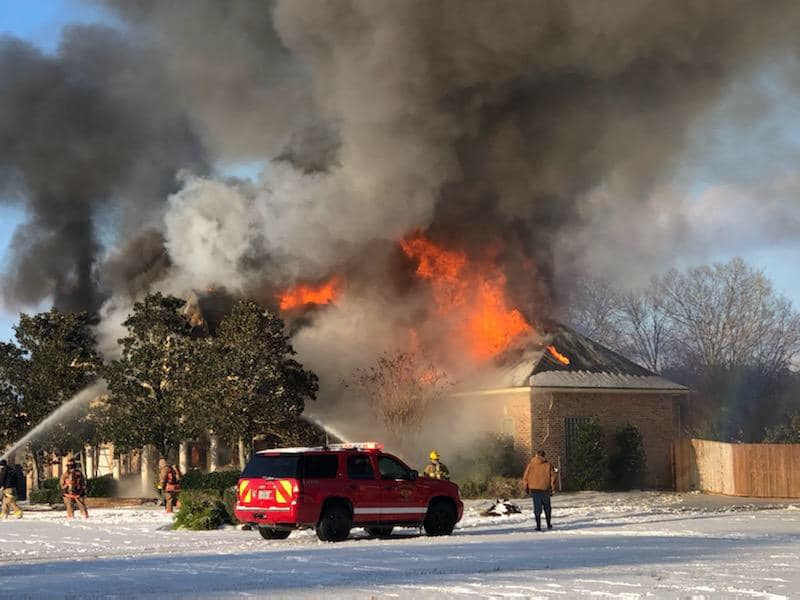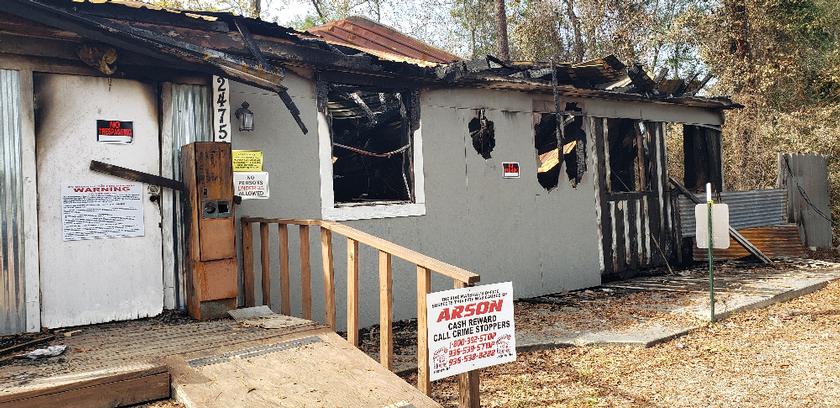- Sections :
- Crime & Public Safety
- Restaurants & Food
- Sports
- More
With onset of freezing weather comes an increased risk of fire from home heating equipment.

THE WOODLANDS, TX – Heating is a major cause of home fires in the United States, second only to cooking fires. Heating fires started by portable space heaters account for the most deaths and injuries.
Temperatures are forecast to fall well below freezing next week and residents will be firing up their home’s heating appliances, space heaters, and fireplaces to combat the bitter cold. Home heating fires often occur at the worst possible time, breaking out in the middle of the night while our families are asleep. The number one safety recommendation is to first and foremost have working smoke alarms in every bedroom and adjoining hallways. Working smoke alarms dramatically increases your chance of surviving a fire.
Heating equipment is one of the leading causes of home fire deaths. According to the National Fire Protection Association, (NFPA),Fire Departments responded to an estimated average of 40,997 fires involving heating equipment per year from 2018-2022, accounting for 12% of all reported home fires during this time, and these fires resulted in annual losses of 470 civilian deaths.
The high cost of home heating fuels and utilities has caused many Americans to search for alternative home heating sources such as wood burning stoves, space heaters, and fireplaces. Over one-quarter of home heating fires result from improper maintenance and cleaning of heating equipment, while space heaters accounted for 4 out of every 5 home heating fire deaths.
Carbon monoxide (CO) poisoning is another danger when using heating equipment fueled by fossil fuel. It occurs most often when gas fueled equipment is not vented properly. CO deaths have been on the rise since 1999, and estimates range as high as 700 deaths annually. Carbon monoxide poisoning is most fatal to adults age 65 or older. Homes with gas appliances must also have a Carbon Monoxide Detector on each floor.
Heating Fire Prevention
- Keep or maintain a 3 foot clearance between all heating equipment and anything that can burn.
- Inspect and maintain heating equipment regularly for safety.
- Be sure to have fixed space heaters installed by a qualified technician, according to manufacturer’s instructions or applicable codes. Or, make sure a qualified technician checks to see the unit has been properly installed.
- When buying a new, portable space heater, make sure it has the label showing it is listed by a recognized testing laboratory, such as Underwriters Laboratories (UL).
- Space heaters should be turned off every time you leave the room and before going to bed.
- Choose space heaters that turn off automatically if they tip over.
- Never use a space heater to dry clothing.
- Do not use your oven to heat your home.
- Install smoke alarms in every bedroom, outside each sleeping area, and on every level of the home. For the best protection, interconnect all smoke alarms throughout the home. When one sounds, they all sound.
- Test smoke alarms monthly.
- Install and maintain carbon monoxide alarms to avoid risk of carbon monoxide poisoning
Heating Fire Statistics - Based on 2018-2022 annual averages:
Space heaters and heating stoves were the type of heating equipment responsible for the largest shares of losses in home heating equipment fires, accounting for nearly half (46%) of the fires, but nearly eight out of ten deaths (76%) and seven out of ten (72%) of the injuries in home fires caused by heating equipment.
- Fires originating in a kitchen or cooking area accounted for the largest share of home heating fires (18%).
- While the larger (non-confined) fires involving fireplaces or chimneys were involved in fewer than one in ten fires caused by heating equipment (8%), they caused just over one-fourth of the direct property damage (27%).
- Nearly half of the heating equipment fires (46%) occurred in the three-month period from December through February.
Source: NFPA Research Division


















